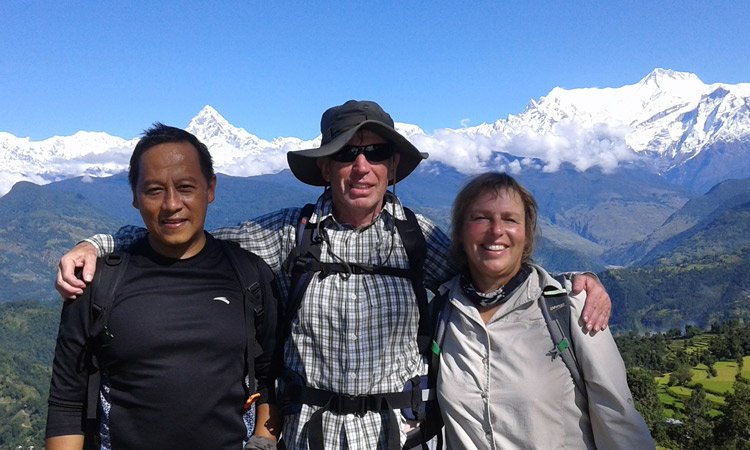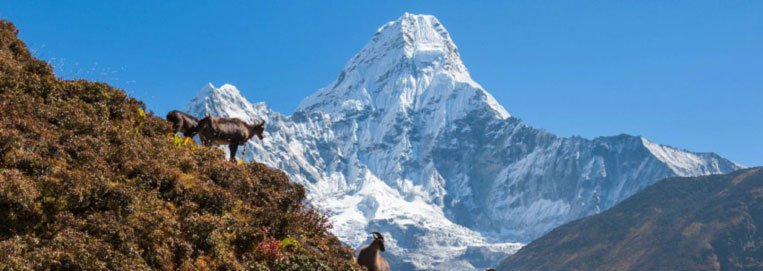
Mustang Trek
-
Itinerary
Our trip allows for plenty of acclimatisation time - the best way to ensure you enjoy the experience is to follow established acclimatisation schedules and not to rush!
-
Price
This trip is US$3275 per person, based on a booking for 2 people - contact us if you have more .
-
Reservation and Enquiries
To find out more, just contact us and we’ll sort your trek out for you - organised by the locals!
Trip Overview
Mustang is probably a Nepalese mispronunciation of the name of the capital of Lo, the city of Manthang. Mustang is used to refer to the arid Tibet like region at the northern end of the Kali Gandaki (known to its inhabitants as Lo). Officially Mustang is the name of the district along the Kali Gandaki from the Tibetan border south to Ghasa. The region north of Kagbeni where the language, culture and tradition are purely Tibetan is generally referred to as upper Mustang. This region has a long and complex history that makes it one of the most interesting places in Nepal. Upper Mustang was once part of Ngari, a name for far Western Tibet. It was not a true political entity, but a collection of feudal domains. By the 14th century, it was part of the Malla Empire.
It is generally believed that Ame pal was the founder king of Lo in 1380. Ame Pal conquered a large part of the Kali Gandaki and was responsible for the development of the city of Lo Manthang and many monasteries. Lo remained as a separate principality until 1951. Lo was consolidated into Nepal.
The trek to Lo is through a barren treeless landscape. The wind is very strong here especially in the afternoon. It lies in the rain shadow of the Himalaya and has much less rain then the rest of Nepal. The country side of Lo is similar to the Tibetan Plateau with its endless expanses of yellow and grey rolling hills eroded by winds. The trek begins and starts from Kagbeni, about two hours walk from Jomsom. The trek does not go to extremely high elevations, but the cold, dust and unrelenting afternoon winds can make the trek less pleasant than other treks in Nepal. There are daily flights from Pokhara to Jomsom. Mustang lies under the restricted area and has to follow the restriction rules and regulation period.
The trek starts from Pokhara or you can fly to Jomsom and start the trek. The land is also covered with other glittering snow peaks like Nilgiri, Tukuche and Muktinath, the famous shrine of the Hindus.
Mustang is 200 km into the hinterland that constitutes mainly barren ridges, deep canyons, eroded cliffs and Moraine valleys. Its landscapes in unrivaled for it has a stupendous wilderness, pristine scenery, snow capped peaks, spectacular 16th century monasteries. The view of windswept Kali Gandaki valley, vast spaces around Kagbeni and vast ridges that straggle high mountains provide a mind blowing experience.
The best time to trek is from March till November, even during the monsoon season as it lies in the rain shadow.
Outline Itinerary
Day 01 : Arrival in Kathmandu
Day 02 : Rest day / sightseeing in Kathmandu
Day 03 : Rest day and paper work at the immigration office in Kathmandu (immigration office is closed on Saturday)
Day 04 : Kathmandu – Pokhara (drive)
Day 05 : Pokhara – Jomsom (2,720m) flight. Trek to Kagbeni 2,720m
Day 06 : Chele 3,050m
Day 07 : Geling 3,050m
Day 08 : Dhakmar 3,820m
Day 09 : Lo Manthang 3,750m
Day 10 : Thinggar 4,000m, Garphu 3,897m
Day 11 : Lo Manthang
Day 12 : Dhi Gaon 3,360m
Day 13 : Lori Gompa 3,890m, Surkhang 3,400m
Day 14 : Tangge 3,240m
Day 15 : Chusang 2,980m
Day 16 : Muktinath 3,760m
Day 17 : Jomsom
Day 18 : Jomsom to Pokhara (Flight)
Day 19 : Rest day at Pokhara
Day 20 : Fly to Kathmandu
Day 21 : Departure.




